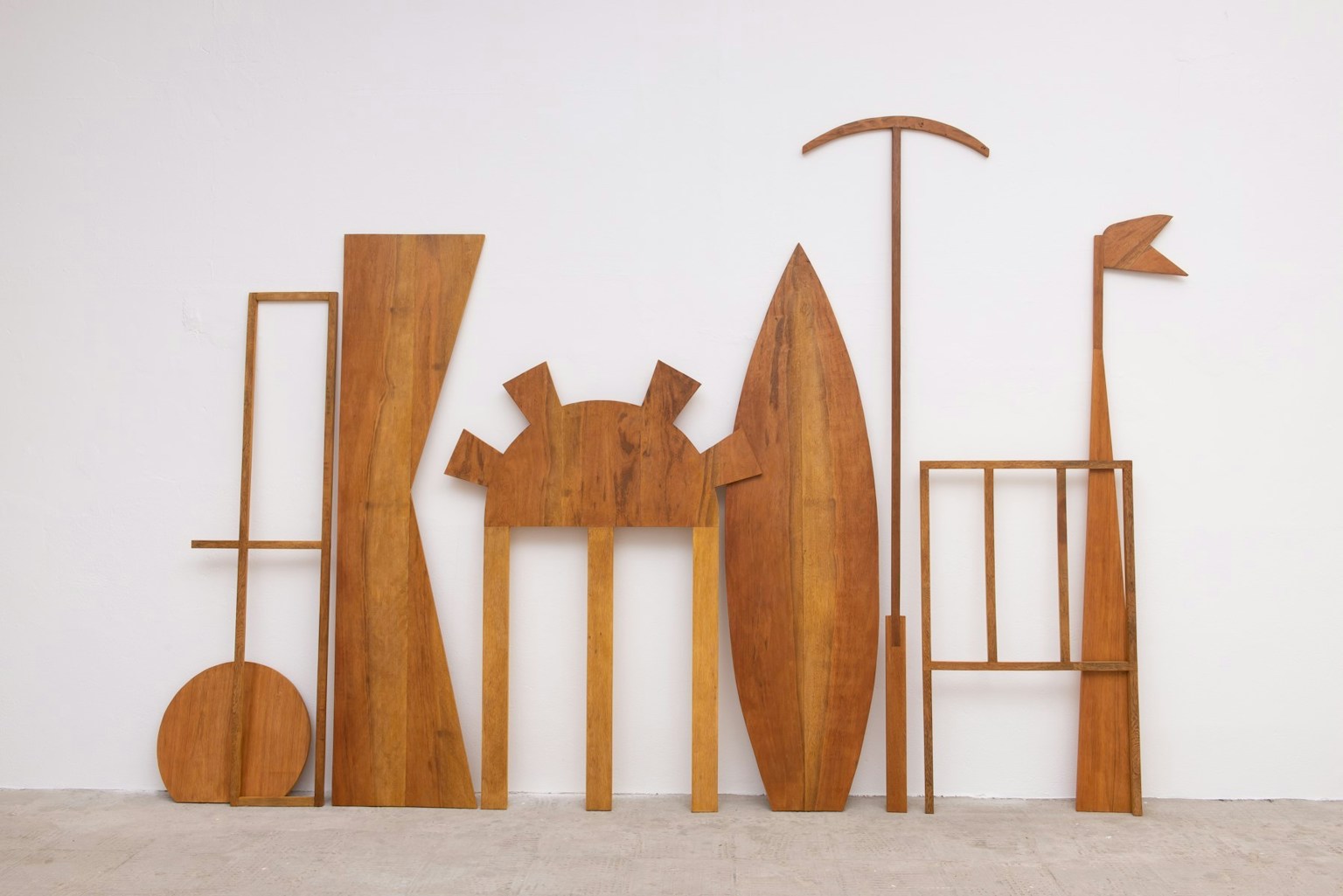Ana Mazzei | Templo 1
2020
wood, varnish
unique
280 x 360 x 10 cm
Ana Mazzei | Templo I
2020
wood, varnish
unique
250 x 320 x 10 cm
Ana Mazzei | Templo - Face Oeste
2020
wood, varnish
unique
249 x 360 x 10 cm
Les Amis du S.M.A.K. ont le plaisir de vous annoncer l'achat de l'œuvre de l'artiste brésilien Ana Mazzei (°1980).
Mazzei vit et travaille à São Paulo.
Pour Ana Mazzei, l'art, l'architecture et les paysages construisent en eux-mêmes une fiction qui les relie, donnant lieu à des installations, des décors et des objets.
Certains travaillent à plus petite échelle, comme la série d'installations disposées au sol et constituées de groupes de petites formes en feutre, en béton ou en bois. Semblable aux modèles architecturaux des villes, amphithéâtres ou monuments antiques. Au-delà des exercices formels, ces objets au sol évoquent des histoires non identifiées qui suggèrent des structures archétypales cachées et impénétrables - ils sont comme des morceaux et des fragments de mythes, de vies et de fictions qui sont représentés dans des peintures, des vidéos, des sculptures et des installations.
Ses œuvres ont récemment fait l'objet d'importantes expositions institutionnelles au SESC Pompéia (São Paulo), MASP (São Paulo), Padiglione d'Arte Contemporanea (Milan), Bienal Internacional de Cuenca, Bienal Internacional de São Paulo, House of Egorn (Berlin), Contemporary Art Center (Vilnius, Lituanie), Instituto Tomie Ohtake (São Paulo), Parque Lage (Rio de Janeiro), entre autres.
De werken van Ana Mazzei maken deel uit van belangrijke institutionele collecties, zoals: Nouveau Musée National (Monaco), Sammlung Philara Collection (Düsseldorf, Duitsland), Centre National des Arts Plastiques (Parijs, Frankrijk), Glasgow International, (Schotland), MASP - São Paulo's Art Museum (São Paulo, Brazilië), Brazilian Art Museum (FAAP, São Paulo) en recent de Vrienden van S.M.A.K. collectie.
Ana Mazzei à propos de son oeuvre:
"The notion of spectatorship is at the centre of my work. For this reason, concepts such as display, proportion and scale are integral to how my work is constructed, often converging into installations.
The Temple is an installation composed of 24 pieces carefully designed and cut in solid wood, in this case Cedar, chosen for the quality of the wood's grain and for the color that can be different depending on its cut. Rather than being conceived as autonomous work, the Temple was thought to embrace the notion of theatricality, staged as an intermediary between the idea that the spectator has about a temple and an imaginary ‘other space’ staged in order to establish specific relationships between bodies and space.
The installation is accompanied by an audio piece, which reveals a degree of abstraction that takes us to an environment of extrasensory experience, only possible through music. I think about the different configurations that this set of pieces can reach, molding itself depending on the space and guaranteeing its presence in multiple assemblies.
In my practice, site-responsiveness inevitably implies a degree of improvisation: although always using drawing as a starting point in my exhibition-making process, the installation stage remains open to be choreographed according to different architectural conditions.
There is also this visual vocabulary that I am always looking for that combines a strong geometric inclination with sensibility that may betray a nod to the constructive legacy of Brazil’s late modernist movements, namely the Concretist and Neo-Concretist production of the 1950s. However, in contrast with the formalist orthodoxy of the form, our Temple is impregnated with symbolic meaning."

















